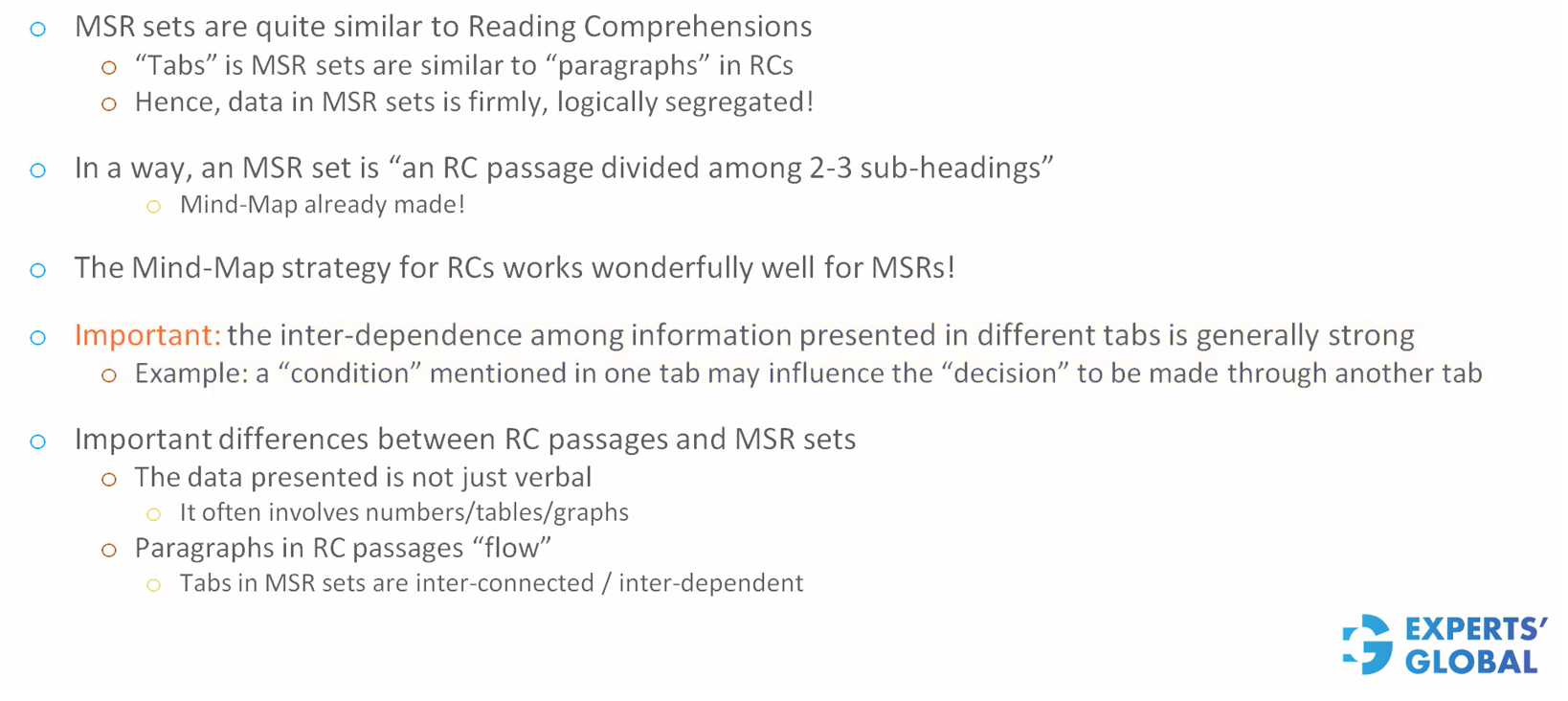Invest 30 seconds...
...for what may lead to a life altering association!
Help Line
- +91.8800.2828.00 (IND)
- 1030-1830 Hrs IST, Mon-Sat
- support@expertsglobal.com
...for what may lead to a life altering association!


Multi source reasoning in the GMAT Data Insights section is both time consuming and strategically important because these questions appear in sets. You may face one or two MSR sets on test day, with three questions linked to each set, so you effectively deal with three or six questions from this single question type. Since all questions in a set draw on the same pool of information, they are interdependent, which means there is a real possibility of getting all of them right or all of them wrong. This cluster effect can have a significant impact on your Data Insights score. That is why thoroughly mastering MSR problems must be a clear and non-negotiable part of your GMAT preparation course.
The right way to build MSR mastery is to begin with a clear, thoughtful strategy for approaching MSR questions. Once that strategy is in place, apply it on several MSR sets while focusing fully on accuracy and not worrying about speed. When you consistently achieve high accuracy and start feeling comfortable with the question type, you can gradually introduce timing and aim for a healthy balance between accuracy and speed.
In this article, supported by a video lesson, we will discuss an efficient strategy for solving multi source reasoning questions. You can adopt and apply this strategy across multiple MSR sets and carry this approach throughout your GMAT preparation. For due results, ensure that you attempt an adequate number of MSR drills and also take a high number of full length GMAT mock tests, so that you gain real experience of facing one or two MSR sets within the full GMAT simulation as a part of the Data Insights section, under genuine time pressure.

Multi-Source Reasoning tests your ability to gather, relate, and judge information that is spread across two or three tabs. Think of it as a compact Reading Comprehension passage already divided for you. The challenge is not length, it is interdependence.

Like Reading Comprehension, MSR rewards calm reading and a clean structure of ideas. Unlike RC, MSR blends prose with numbers, small tables, or simple charts. RC paragraphs flow in sequence. MSR tabs are interconnected; a condition in one tab may decide how you read the data in another. The flow can feel fragmented, but the relationships are stronger.
In many sets, a constraint or definition lives in Tab 1, while the figure you must judge sits in Tab 2. Sometimes Tab 3 adds an exception that changes the outcome for only a subset of cases. Answers are often wrong because a reader treats each tab in isolation.
